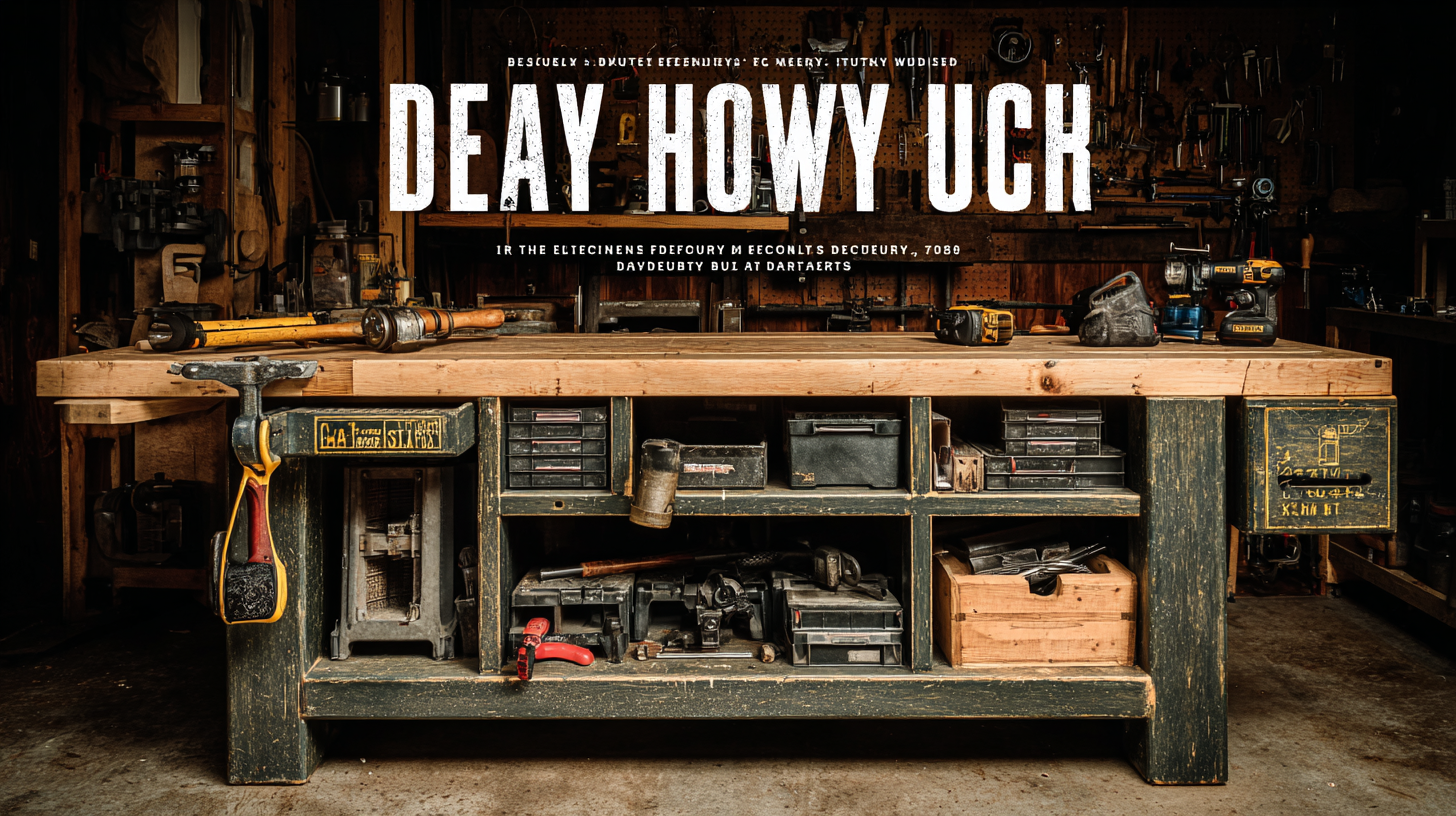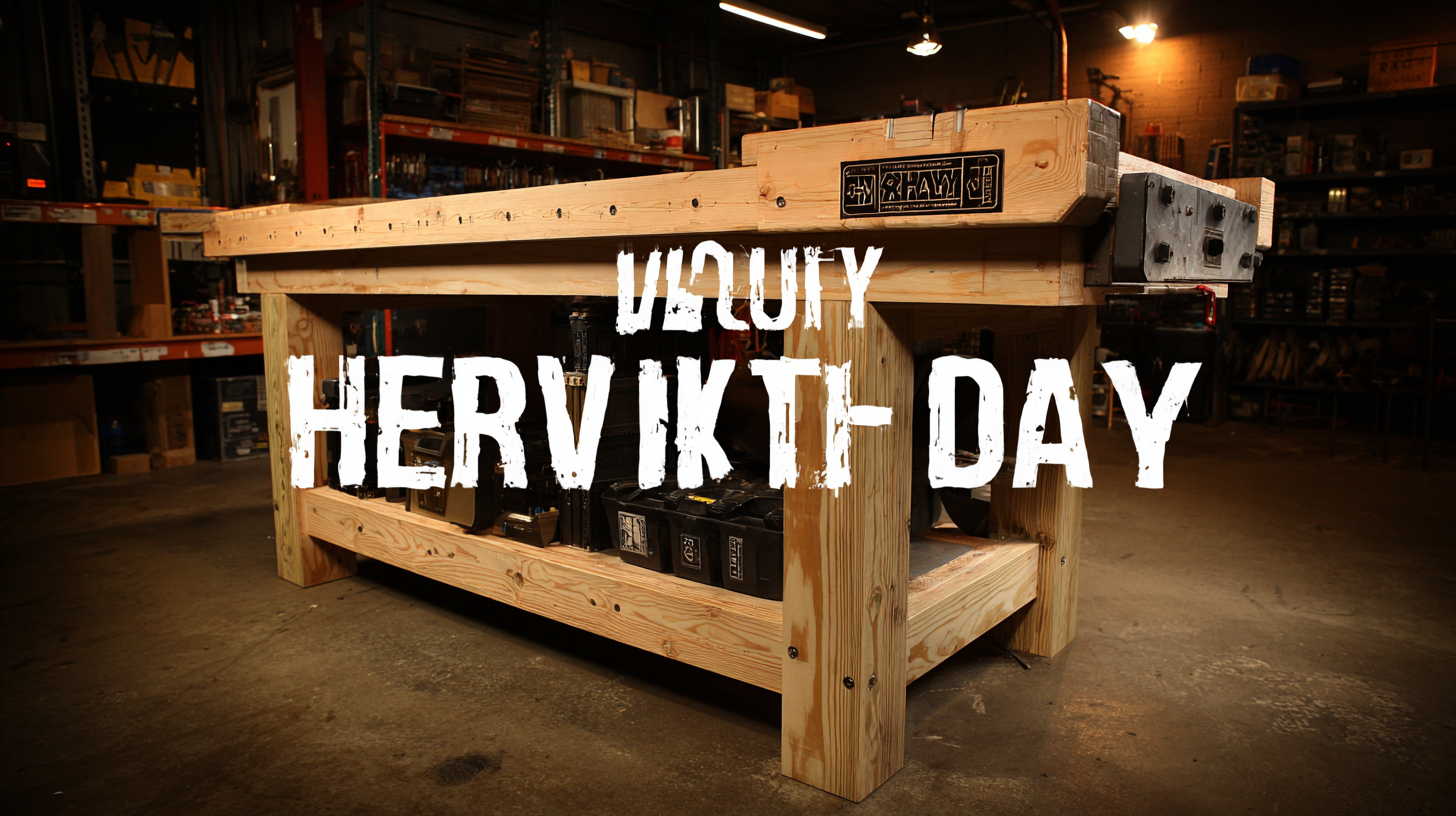Unlocking Efficiency: A Complete Guide to the Specifications and Setup of the Ultimate Heavy Duty Workbench
In today's fast-paced industrial landscape, efficiency and reliability are paramount, particularly in the context of heavy-duty workbenches, which are essential for maximizing productivity in various workshop settings. According to a recent report by Grand View Research, the global workbench market is projected to reach USD 1.35 billion by 2025, driven by the increasing demand for durable and versatile workstations. This surge emphasizes the importance of investing in high-quality heavy duty workbenches that can withstand rigorous use while adapting to diverse tasks. As we delve into a comprehensive guide on the specifications and setup of the ultimate heavy duty workbench, we will explore how proper design and engineering can unlock significant operational efficiencies and contribute to a safer work environment. With the philosophy of "China Manufacturing, Global Sharing, Quality You Can Trust," we aim to equip you with the knowledge necessary to make informed decisions for your workshop needs, enhancing both performance and longevity.

Choosing Quality Manufacturers: Key Criteria for Heavy Duty Workbenches
When selecting heavy-duty workbenches, it’s essential to prioritize quality manufacturers that can meet the rigorous demands of heavy use. One crucial criterion is the materials used; benches constructed from high-grade steel or hardwood tend to offer enhanced durability and stability. According to industry reports, a well-built heavy-duty workbench can support loads exceeding 1,500 pounds, making it suitable for various applications, from automotive work to metal fabrication.

Furthermore, look for manufacturers with a proven track record of quality assurance processes. The standards set by organizations such as ISO 9001 ensure that production techniques meet international benchmarks, resulting in consistent product quality. Additionally, consider ergonomic design features that can enhance user comfort and efficiency. For instance, adjustable height options can significantly reduce strain during extended periods of use, which is particularly important in demanding environments like warehouses or construction sites.
Prioritizing these key criteria will help ensure that your heavy-duty workbench meets your specific operational needs.
Understanding Specifications: The Essential Features of Heavy Duty Workbenches
When selecting a heavy-duty workbench, understanding its specifications is crucial to maximizing efficiency and functionality in any workspace. According to a 2021 report by IBISWorld, the workbench manufacturing industry is valued at approximately $2 billion, indicating a robust market with a variety of options tailored for different needs. Essential features to consider include weight capacity, material durability, and surface area. A typical heavy-duty workbench can support between 1,500 to 3,000 pounds, with steel and hardwood being the most recommended materials due to their strength and longevity.
Moreover, customization plays a significant role in achieving optimal setup. Reports from Industrial Manufacturers indicate that adjustable-height workbenches are gaining popularity, enhancing ergonomics and allowing users to alternate between sitting and standing positions. It's also essential to consider features like integrated storage solutions and power outlets, which can streamline workflow and reduce clutter. Investing in a workbench that meets these specifications not only increases productivity but also ensures safety and longevity in demanding environments.
Unlocking Efficiency: A Complete Guide to the Specifications and Setup of the Ultimate Heavy Duty Workbench
| Specification | Details |
|---|---|
| Material | High-Density Steel |
| Weight Capacity | 2,000 lbs |
| Workbench Size | 60" x 30" |
| Surface Finish | Powder Coated for Durability |
| Drawer Configuration | 3 Full-Extension Drawers |
| Assembly Required | Minimal, Tools Included |
| Adjustable Feet | Yes, for Leveling |
| Warranty | 5 Years Limited Warranty |
Top 5 Brands: Industry Leaders in Heavy Duty Workbench Solutions
When it comes to heavy-duty workbenches, the right choice can greatly enhance productivity and safety in various work environments. According to a report from MarketsandMarkets, the global market for workbenches is projected to grow at a CAGR of 4.5% from 2021 to 2026, indicating a rising demand for durable and efficient workstation solutions. Among the top brands in this sector, companies like Gladiator, Husky, and Seville Classics are leading the charge, offering innovative designs that cater to professionals and hobbyists alike.
Gladiator, known for its exceptional modular designs, integrates strong structural integrity with customizable options, allowing users to adapt their workspace to specific needs. Husky offers robust storage solutions, combining heavy-duty materials with functional design to promote organization and workflow. Meanwhile, Seville Classics places emphasis on both mobility and strength, giving users a versatile solution that can be easily reconfigured depending on project requirements.
With these industry leaders driving advancements in durability and functionality, choosing the right heavy-duty workbench can significantly impact operational efficiency in workshops and garages across various sectors.
Setting Up for Success: Optimal Configurations and Layouts for Maximum Efficiency
When it comes to setting up the ultimate heavy-duty workbench, optimal configurations and layouts play a crucial role in maximizing efficiency. A well-organized workspace enhances productivity and streamlines workflow. Start by considering the placement of your workbench; position it near frequently used tools and materials to reduce unnecessary movement. Ensure that you have adequate lighting from multiple angles to eliminate shadows and create a safe working environment.
**Tip:** Utilize wall-mounted storage solutions to keep tools and supplies within arm's reach. This not only clears the workspace but also maintains an orderly environment. Magnetic strips for tools and pegboards for small items are effective ways to keep everything organized.
Another important aspect of your workbench setup is the arrangement of your workspace. Keep a clear area for tasks that require precision, while allocating zones for assembly, repairs, or painting. Use color-coded bins or labeled containers to categorize different materials, which can significantly speed up your workflow.
**Tip:** Consider adding a mobile cart for tools and supplies that you often need but want to keep off the main workbench. This modular approach can help create a versatile workspace that adapts to your projects, maintaining efficiency at all times.
Work Efficiency Based on Workbench Setup Configurations
This chart demonstrates the efficiency ratings of different workbench setups. The ratings, scored from 1 to 10, provide insights into how various configurations can impact productivity in a workshop or workspace.
Industry Insights: Statistics on Durability and Performance Ratings of Workbenches
In the realm of heavy-duty workbenches, understanding the specifications and performance metrics is crucial for maximizing efficiency and durability. Recent industry insights reveal that the longevity of a workbench significantly influences operational productivity. Statistics indicate that a well-constructed bench can enhance workflow by providing a stable and reliable platform for various tasks, ultimately reducing downtime and increasing overall output. When selecting a workbench, it’s imperative to consider factors such as material quality, weight capacity, and design ergonomics, as these elements directly impact its performance ratings.

Moreover, trends in data utilization are reshaping how businesses evaluate equipment like workbenches. By leveraging data mining and business intelligence, companies can analyze customer feedback and performance metrics to make informed decisions regarding their workspace setups. The integration of technology not only streamlines operations but also enhances the accuracy of selecting appropriate work surfaces. Industries are increasingly recognizing the value of investing in durable and high-performance workbenches, which not only facilitate a more organized work environment but also drive operational excellence.
Footer
Resource Center
Contact Us
1901 West Main Street
Washington, MO 63090
Main Directory: 1-800-227-4873
Email: sale@pangcofurniture.com
Affiliations


